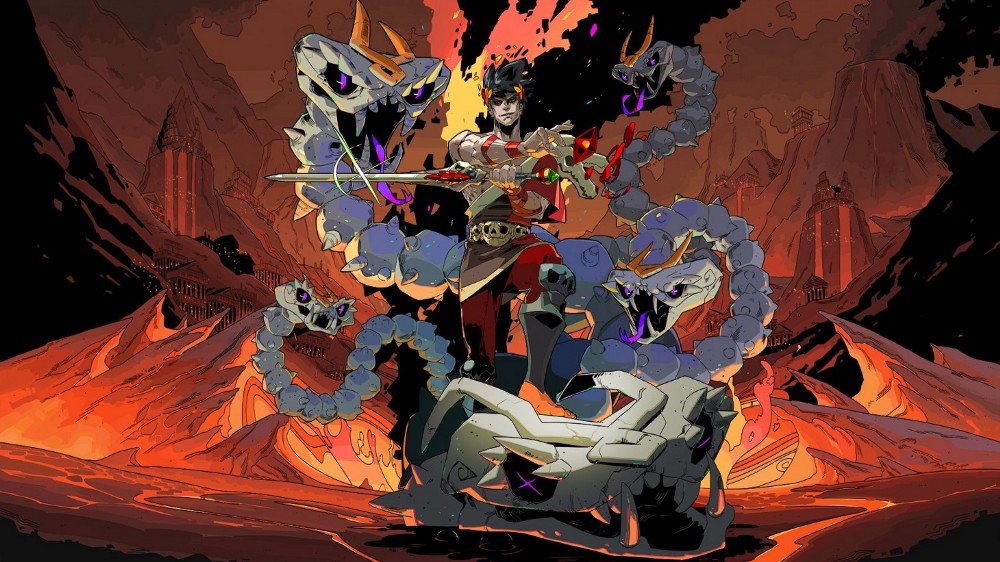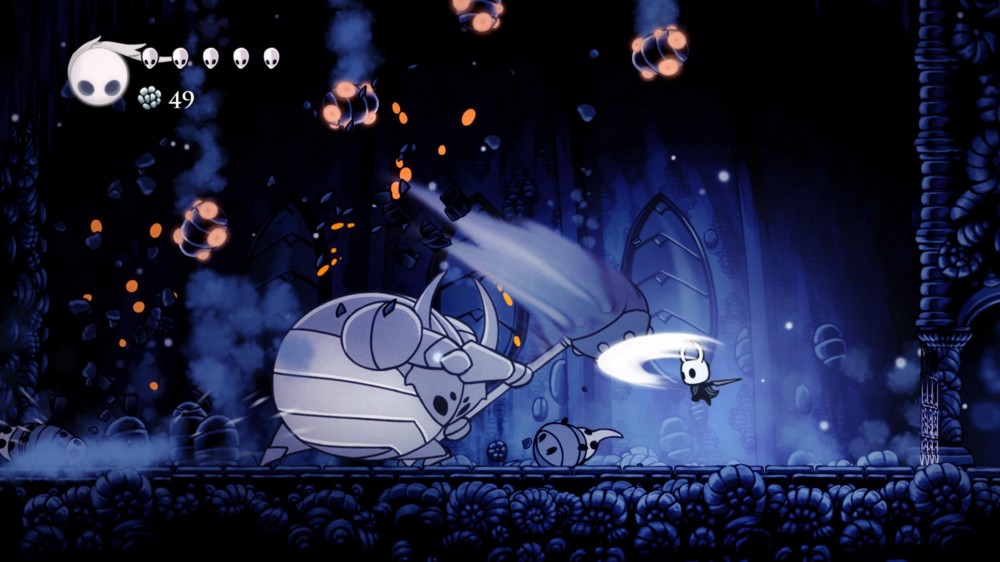This article by Josh Bycer originally appeared on Super Jump Magazine on October 5.
Video game difficulty has often been a polarizing topic — whether we’re talking about the “live, die, repeat” cycle of roguelikes, the higher than normal skill floor of Soulslikes, or the idea of a game possessing a casual or “story” difficulty level. Regardless of your stance on video game difficulty, one thing is clear: the core design philosophy around difficulty has changed, and it’s important to recognize this when thinking about game design today.
Josh Bycerauthor of “20 Essential Games to Study” and “Game Design Deep Dive Platformers”owner of game-wisdom.com.
Origins of difficulty
Video games were born from the arcades. This is important to recognize, because there are particular drivers that guide the direction of arcade game design. Also, because most early games existed in an arcade context, game design itself was highly influenced by arcade games for many years. One of the drivers that most impacted arcade game design was the need to get the maximum dollar value out of each consumer. The way this articulated in arcade games was generally in the form of increased difficulty — if the player continually died or lost, they might be motivated to spend more money to keep playing.
When console games arrived, this formula didn’t actually disappear. But developers did find other ways to extend the life of some video games. For example, extra complexity — which may sometimes require a strategy guide — meant that it could take longer for a player to complete the game. Nevertheless, arcade-style concepts remained prominent (for example, Ninja Gaiden’s infamous final chapter was frustrating because the player’s progress was lost each time they died during the final set of bosses).
Regardless of the specific approach taken around difficulty, there’s one common theme that I hope you’ve picked up on here: each system actively punishes new and lesser-skilled players in particular. If you watch speed runs or master level play of these games, you’ll notice that the players aren’t bothered by any of these barriers at all. When you’re good enough at a game, no punishment system is going to impact you at all — but these systems will definitely affect new players. What’s worse is that many of these punishment systems don’t actually add anything to the game experience; that is to say, they only have a negative effect on certain players. And while many gamers will treat difficulty as a badge of honor, developers should avoid implicitly targeting new players with difficult systems — that’s not how you want to design your game today.
Different flavors of difficulty
Players do experience games differently, and therefore have different thoughts about that experience. Some people want to be tested and face a substantial uphill struggle. Others just want to experience the game mechanics or experience the story. Given these differences in motivation — and player experience and skill level — we’ve seen developers increasingly embrace more controlled forms of difficulty. When we discuss difficulty in this context, we aren’t just talking about making the game easier — we’re also referring to ways of making it harder without adding needless frustration.
Hades “God Mode” ensures that players can still complete the game and enjoy the story regardless of skill level. Source: Supergiant Games
How do developers approach this? The first and arguably most well known way is through explicit difficulty settings. Many games are now designed around multiple difficulties that vary between almost no challenge to deeply punishing. In my opinion, these explicit difficulty settings are still something of a band-aid fix — that’s because they involve developers applying settings as blanket rules across the board. What typically happens here is that various stats are tweaked to raise or lower the bar. This approach can work, but it doesn’t lend itself to the developer casting a critical eye at the game itself to understand where the major pain points are.
There are more nuanced variations on this idea of difficulty settings. Some games allow the player to fine tune very specific parts of the experience from a difficultly perspective. So, maybe you aren’t the best at stealth but you’re great at combat — you could make the stealth sections easier and increase the difficulty of the combat. Games like The Last of Us Part II and Way of the Passive Fist allow players to adjust specific components to their preferred level of challenge. This approach is closer to what I’d call player-controlled difficulty. And I’d argue it’s an essential ingredient in terms of improving the approachability of video games. It’s also useful because it helps developers understand — in more specific terms — which parts of their design might be frustrating for players. These can then be refined and adjusted going forward.
There are many other permutations that go beyond these individualized settings. Hades, for example, has a “god mode” that is specifically aimed at newer or lesser-skilled players who want to enjoy the game and see the story without being so heavily reliant on twitch-based skills. If you turn this mode on, you’ll receive a permanent buff every time you die. This guarantees that the experience will become progressively easier over time.
Monster Hunter World is a good example of a game that has implicit ways of making the game easier and more accommodating for new players. As I’ve detailed in the past, Monster Hunter is a series that defined itself by opaque and challenging gameplay for more than a decade. With the most recent iteration, however, the developers completely redesigned the onboarding experience — providing much easier ways to set up groups without sacrificing the depth and challenge fans have come to expect from the series. Players certainly can try to tackle every fight solo if they want. But the option to go in with a group is always there.
Of course, some developers implement the nuclear option when it comes to player-controlled difficulty. This involves giving players access to a cheats menu of sorts that they can use at their whim. Celeste famously allowed players to activate invincibility, infinite jumping, and other modifiers if they got stuck on any challenging section. If you want to guarantee game completion, this is a surefire way of doing so.
So far I have discussed various ways of making a game easier. And although there are better and worse ways of doing that, the greater challenge for developers is arguably the idea of increasing challenge without increasing frustration.
Progressive difficulty
Let’s start with a simple but vital point: learning a game should not be difficult. There are still developers out there creating bad tutorials, or purposely allowing the game to be difficult to figure out as a way of driving challenge. That is a game design sin in my book, and it’s not where you want to focus on challenge. As always, tutorials and onboarding are massive topics in and of themselves. I won’t cover them in more detail here, but you can read a dedicated piece on the topic right here.
What is good challenge? Fundamentally, it’s about raising the stakes and rewards for those who want it. Remember my earlier comments about the different motivations of different players. Some people are out looking for a tough-as-nails challenge. Others are looking for story or the pleasure of interacting with the game’s mechanics. I am conscious that whenever this topic comes up, there are always some people whose knee-jerk reaction will be to claim that developers shouldn’t “dumb down” the experience — the implication being that any attempt to cater for approachability represents a compromise or concession. But that is a misunderstanding of the design philosophy I’m discussing here. To explain by way of example, many developers now are adopting an approach that Nintendo has followed for many years now: provide a baseline experience for everyone, and then ratchet up the difficulty for those who want it.
I would classify this approach as progressive difficulty. It’s an idea that we’re seeing adopted by modern roguelikes, for example. It’s a design that allows the player to adjust the game to make it tougher in interesting ways. Players — regardless of their actual skill level — can tailor the experience to their play style without affecting anyone else. There can be unique rewards and bonuses for playing the game with these greater challenges in place, but it should also be possible to see the story through on the baseline setting.
Difficulty for the sake of difficulty isn’t the selling point it was a few years ago. Developers who chase these hardcore fans are going to find a dedicated — though very small — group of potential customers.
Fair but tough
It’s not possible to discuss difficulty in video games and ignore the Soulslike genre — that is, the games that belong to the Dark Souls/Demon’s Souls/Bloodborne family (including games that are based on the sub-genre that From Software created). What these games demonstrate is that controller-throwing difficulty can still be applied to major hits. But that’s not the end of the story, as you might imagine. The question then becomes “How do I make a hard game that’s still fun?” I’ve played many games from indie developers who are all trying to capture the magic of Dark Souls or Hollow Knight — or really any highly popular and challenging game. Most of these games end up selling a fraction of their progenitor, though they might still build up a ravenous and dedicated fan base.
One of these games is La Mulana 2. I’d call it a “good-bad” game. It’s one of the deepest and most challenging Metroidvania titles around.
But it also fails on several fronts: from onboarding, to approachability…to the moment-to-moment gameplay experience. It’s a series that prides itself on getting the player completely lost and introducing puzzles with no in-game explanation of what the solution could be. Most successful players will need to reach for a strategy guide to make it through. Nothing about this series could be considered accessible — attempts to try to give it more mainstream appeal tend to be met with backlash from fans. La Mulana isn’t the exception, though. Plenty of games never achieved mainstream success despite featuring some original and great gameplay.
No matter how great the gameplay is, the entire experience suffers if it’s buffered by constant frustration. Most people know the phrase “tough, but fair” — I’d argue that in a game design context it should be, “fair, but tough”. Too many developers lean on difficulty as a crutch when it comes to gameplay. Oftentimes poor design decisions are hand-waved away with the explanation that “it’s supposed to be like this” — as if this magically fixes the frustration, or makes it acceptable.
Ultimately, a frustrating game isn’t a good game. And as the above example demonstrates, otherwise great games can shoot themselves in the foot by leaning into the frustration. The thing is, designing a frustrating experience is easier than designing a truly balanced game.
Hollow Knight is another game cited for its difficulty, in spite of having really solid gameplay to go with it. Source: PCGamesN
New difficulty
Let’s wrap up by recapping what difficulty means today. Players expect a fair and balanced design regardless of the intended audience. That means providing an experience that caters to the widest possible market — from someone who is a beginner to the genre all the way through to experts.
Remember though that this discussion isn’t about gameplay itself, it’s about skill levels. In the past, when referencing approachability, I’ve said there’s a vast difference between someone not liking a specific genre versus someone not liking your version of a genre.
Taking a closer look at approachability and making your game appealing to a wide range of fans of that genre ultimately gives your project a greater chance of success in the market. The benefit isn’t just for players, though: as a developer, you’ll improve your own skills and understanding when it comes to identifying and troubleshooting pain points. Many of the most popular and highest-selling games released today have placed a greater emphasis on approachability and accessibility than ever before.
Remember, there’s nothing inherently wrong with making a difficult or challenging game. But if you’re going to do that, you should carefully consider the approach you’re going to take, and avoid simply tweaking global stats at different difficulty levels. You could go for progressive difficulty (where you build a broadly-approachable baseline and then progressively add further difficulty based on the player’s preferences). Or you could follow the Hades example, which contains a higher baseline skill floor but which also contains systems that deliberately cater for new or less skilled players (e.g. the “God Mode”, which enables players to still feel tested but which provides an easier pathway to enjoy the story).
It’s important to point out that you can make a more accessible and approachable game without losing its bite — especially if you’re looking to make a more challenging experience. Catering for accessibility and approachability need not be seen as something that will compromise your game.
When it comes to difficulty in general, the mantra is that players should always feel like it’s their fault when they’ve lost — not that it’s happened due to the game’s design. As always, play testing is key; identifying the line between fair and frustration can lead to great games that can be as easy or hard as the player wants them to be.



